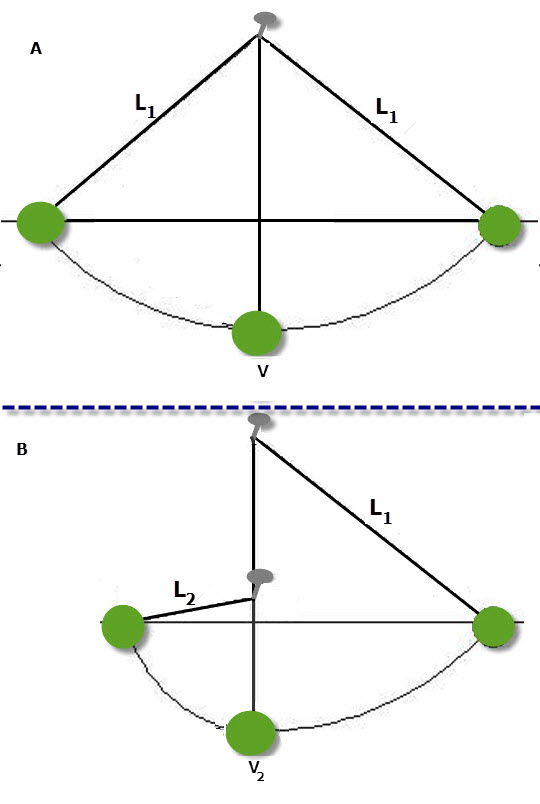Galileo Investigated Ways to Slow Acceleration Due to Gravity
The Italian scientists Galilei Galileo (1564-1642) ) established experimentally that heavy objects fall at practically the same rate. It was obvious to this scientists that a feather and heavy stone did not fall at the same acceleration. But, heavy objects of different masses appeared to fall at a uniform acceleration. Galileo did not measure the magnitude of the acceleration of falling object. Instead, Galileo was able to compare the velocities of objects on ramps at different heights. But Galileo’s ramp investigations is believed to have been after his investigation of the movement of pendulums.
Galileo investigated the effect that height had on the speed of falling objects. Galileo’s hypothesis was:
Free-objects accelerate uniformly, which means the falling object velocity increases an equal amounts in each equal time interval. Thus, when falling from rest, an object’s velocity is twice as fast after two seconds as it was after one second, and after three seconds the object’s velocity is three times as much as it was after one second.
Today, this hypothesis could be easily tested, but Galileo did not have efficient timing devices. He used his heart beat to mark off time for a swinging light in a church. Galileo also created a water-clock that he used to measure time with.
Since falling objects fall so quickly, Galileo investigated ways to slow the falling object, such as using a pendulum as well as rolling balls down inclined planes with different heights and angles.
Galileo designed a pendulum that had two different lengths. He did this by placing a nail in path of the pendulum. As shown in the diagram, the pendulum was free to swing back and forth on the vertical a different length of changed how the pendulum swung on one side of the back-and-forth cycle by placing a nail directly below where the pendulum was attached. See the diagrams.
In diagram A. the pendulum bob is raised to a height and releases. Assuming no air friction, the bob is expected to swing down and rise to the same height. Without any friction, the pendulum would swing back and forth rising and falling from the same height. In the real world, air resistance causes the pendulum to slow and thus rise and fall from a lower height with each swing. But within one swing the height of the bob is almost the same. Thus, the velocity reached at the bottom of the swing is the almost the same in one back and forth swing.
Galileo used a nail as shown in diagram B to change the length of the pendulum swing. Note that the bob is raised to the same height as in diagram A, but at horizontal the string of the pendulum catches on the nail and only a short portion of the pendulum string continues to swing. Notice that the even though the pendulum string is shorter and the angle of the string is smaller, the bob rises to the same height. When the bob on the short sting swings down, its velocity is the same at vertical, thus the bob swings up to the starting height (without friction).
While the shortened length of the pendulum string changed the slope of the pendulum, it didn’t change the velocity of the pendulum bob as shown by the bob swinging back to the same height on the right side.
Discover this for yourself
Create a pendulum using a string and a weight, such as a metal nut. Using transparent tape, secure the free end of the string to the edge of a table so that the pendulum can freely swing back and forth. Instead of using a nail, hold a pencil horizontal to the floor in the path of the swinging pendulum. You want the pencil, like the nail, to catch the string when it is vertical, thus creating a pendulum with a shorter length.
Galileo was convinced that a similar pattern of motion would be observed if a ball rolls down a ramp onto a flat horizontal path and then up a second ramp. Like the pendulum, the ball should roll down one ramp and up the second ramp to the same height. According to Galileo it would not matter about the inclination (slope) of the two ramps. As with any moving object on Earth, there will be friction that prevents this. But assuming no friction, it can be diagrams and calculated to be true. Experimentally, the height of the moving ball will slightly decreased with each back and forth movement.
(Paid Link)

